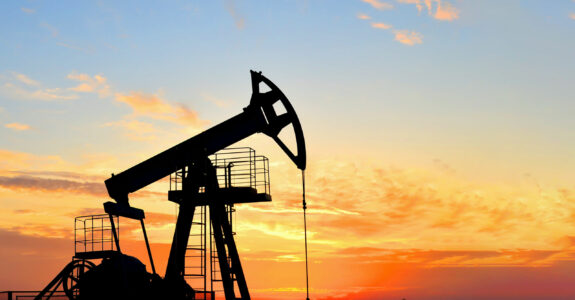
Oil & Gas Industry Methane Emissions Rules are Changing, Here’s What You Need to Know
November 11, 2021
By: Melissa Dakas
On November 2, 2021 the U.S. EPA issued a comprehensive proposal to sharply reduce pollution from the oil and natural gas industry including, for the first time, reductions from existing sources nationwide. The proposed rulemaking is a significant component of President Biden’s commitment to action on climate change and protection of public health by addressing methane and other health-harming air pollutant emissions from one of the nation’s largest contributing industrial sources.
The proposal includes four rulemaking actions under 40 CFR 60:
- Reinstatement of Subpart OOOO and OOOOa requirements that the “2020 Policy Rule” repealed which came back into effect upon enactment of the Joint Resolution Under the Congressional Review Act.
- Revise Subpart OOOOa published in 2016 and amended in 2020 to update, strengthen and expand the current requirements for methane and VOC.
- Propose a new Subpart OOOOb to include standards for VOC and Methane for emission sources not previously regulated under the 2016 Subpart OOOOa.
- Propose the first Emission Guideline (EG) for states to limit methane from existing sources (Subpart OOOOc)
The proposed EG is intended to inform States in the development, submittal, and implementation of State Plans for methane reduction standards that reflect best system of emission reduction (BSER). States are responsible for implementation and enforcement of methane reduction regulations. Pursuant to the Clean Air Act (CAA) 111(d) States must develop and submit a plan consistent with or more stringent than the EG for approval. If a state fails to submit a satisfactory plan, the EPA shall promulgate a Federal Plan for that state. The EG and presumptive standards would serve as a guide to the development of the final Federal Plan.
EPA has withheld proposed regulatory text language for the amendments to Subpart OOOOa and the new Subparts OOOOb and OOOOc at this time. Instead, it seeks comment on the entire proposal and states that it will issue a supplemental proposal sometime in 2022. The EPA is requesting public input about the proposed standards and about additional sources of methane pollution that may be included in the regulatory action to further reduce methane and VOC emissions from the oil and natural gas sector.
In addition to the rulemaking actions, several key features of the proposed rule are:
- Compliance options allowing owners/operators flexibility to employ advanced technologies (such as Optical Gas Imaging, OGI) to find leaks more quickly and at lower cost than previously available
- Comprehensive monitoring program for new and existing well sites and compressor stations
- Zero-emissions standard for new and existing pneumatic controllers which currently account for roughly 30 percent of current methane emissions from the oil & gas sector
- Standards to eliminate venting of associated gas and the requirement to capture and sell gas where a sales line is available
- New performance and presumptive standards for new and existing sources including storage tanks, pneumatic pumps and compressor stations
- Requirement stating that states must engage with overburdened and underserved communities and other stakeholders to develop state plans.
A summary of the proposed standards of performance that reflect the degree of emission limitation achievable through the application of the best system of emission reduction [BSER] for Existing/New/Modified/Reconstructed sources is summarized below (click to expand on each )
The EPA is proposing the calculation of the total site-wide methane emissions baseline by applying the population emission factors for all components found in Table W-1A of the GHGRP Subpart W.
- Well sites with baseline emissions < 3 tpy Methane – Perform a one-time site survey to determine emissions are consistent with the baseline calculation
- Well sites with baseline emissions > 3 tpy Methane – Perform Quarterly OGI surveys
- (co-proposal) – Well sites with baseline emissions > 3 and < 8 tpy Methane – Perform Semi-Annual OGI surveys (co-proposal) – Well sites with baseline emissions > 8 tpy Methane – Perform Quarterly OGI surveys
- LDAR with bi-monthly OGI surveys
- New/Modified/Reconstructed Single Storage Vessel or Tank Battery with a potential to emit of 6 tpy of more – Capture and route to a control device to achieve 95 % reduction
- Existing Single Storage Vessel or Tank Battery with a potential to emit of 20 tpy of more – Capture and route to a control device to achieve 95 % reduction
- Perform Quarterly OGI surveys
- (Optional – Compressor Stations and well sites) Bi-monthly screening with advanced measurement technology and annual OGI survey
- Capture and route emissions to a control device or process to achieve 95 % reduction
- Replace rod packing based on annual monitoring (leak rate exceeds 2 scfm) or route emissions to a process
- Use of zero-emission controllers
- Natural Gas emission rate of zero (natural gas processing plants)
- Route Diaphragm and piston to control device or process (production segment) – 95% reduction
- Route Diaphragm and piston to control device or process (transmission and storage segment) – 95% reduction
- Perform liquid unloading with zero methane or VOC emissions
- Reduced emission completion and use of completion combustion device
- Route Gas to Sales Line, or
- Use gas as onsite fuel source or other useful purpose to achieve 95% reduction
What are your next steps?
With the standards of performance for this proposed new rule consisting of 577 pages of detailed and technical information, there is a lot to interpret, leaving you to determine just how this will affect your organization. You need an experienced partner to help guide you through these sweeping changes – working with you to assess your current situation, develop a plan of action, and to assist you in implementing it so that you can stay ahead of any potential negative actions from these changes.
* Learn more about one way to stay ahead in Jared Metcalf’s blog — Optical Gas Imaging: Navigating New EPA Methane Rules and Making Detection Quicker, Easier, More Affordable
Montrose provides comprehensive services to our clients in the oil & gas industry, including monitoring, LDAR program management and implementation, regulatory compliance, and turnkey services. We also have our teams locally located near major oil & gas facilities – making them familiar with particular challenges and nuances of the area.
We’re ready to advise and assist you with these proposed rule changes, and to help you get through this complicated time. For more information, please contact Melissa Dakas at mjdakas@montrose-env.com
 Melissa Dakas
Melissa Dakas
Ms. Dakas has 20 years of project management and solution development experience in the chemical engineering and environmental compliance fields. The last 15 years of her career have been spent in environmental consulting navigating the complex environmental requirements of the Northeast states, the Caribbean, and the Texas Gulf Coast Regions. Ms. Dakas specializes in air permitting and compliance through working with both industry and government to implement business objectives while conforming to environmental regulations.


